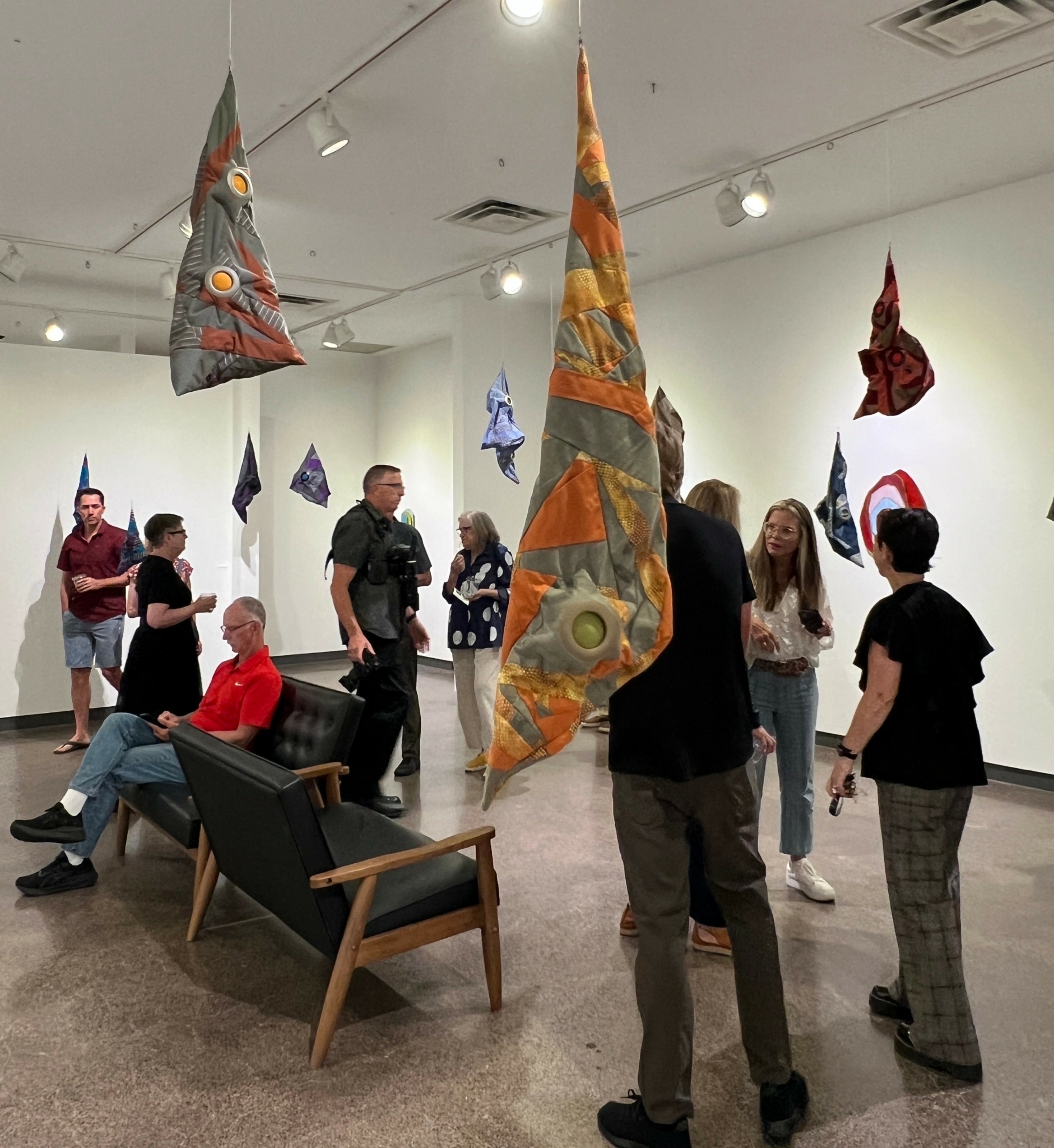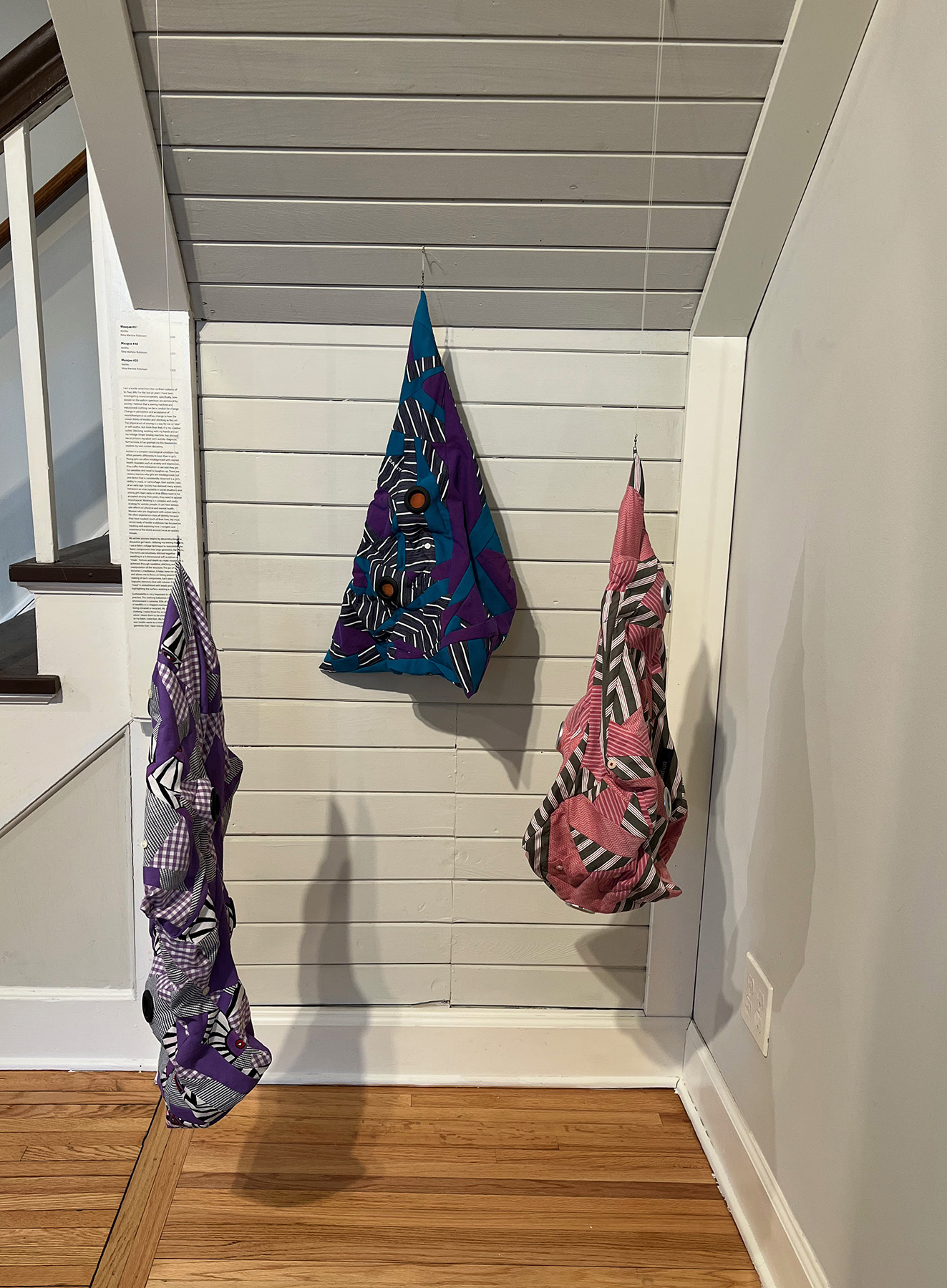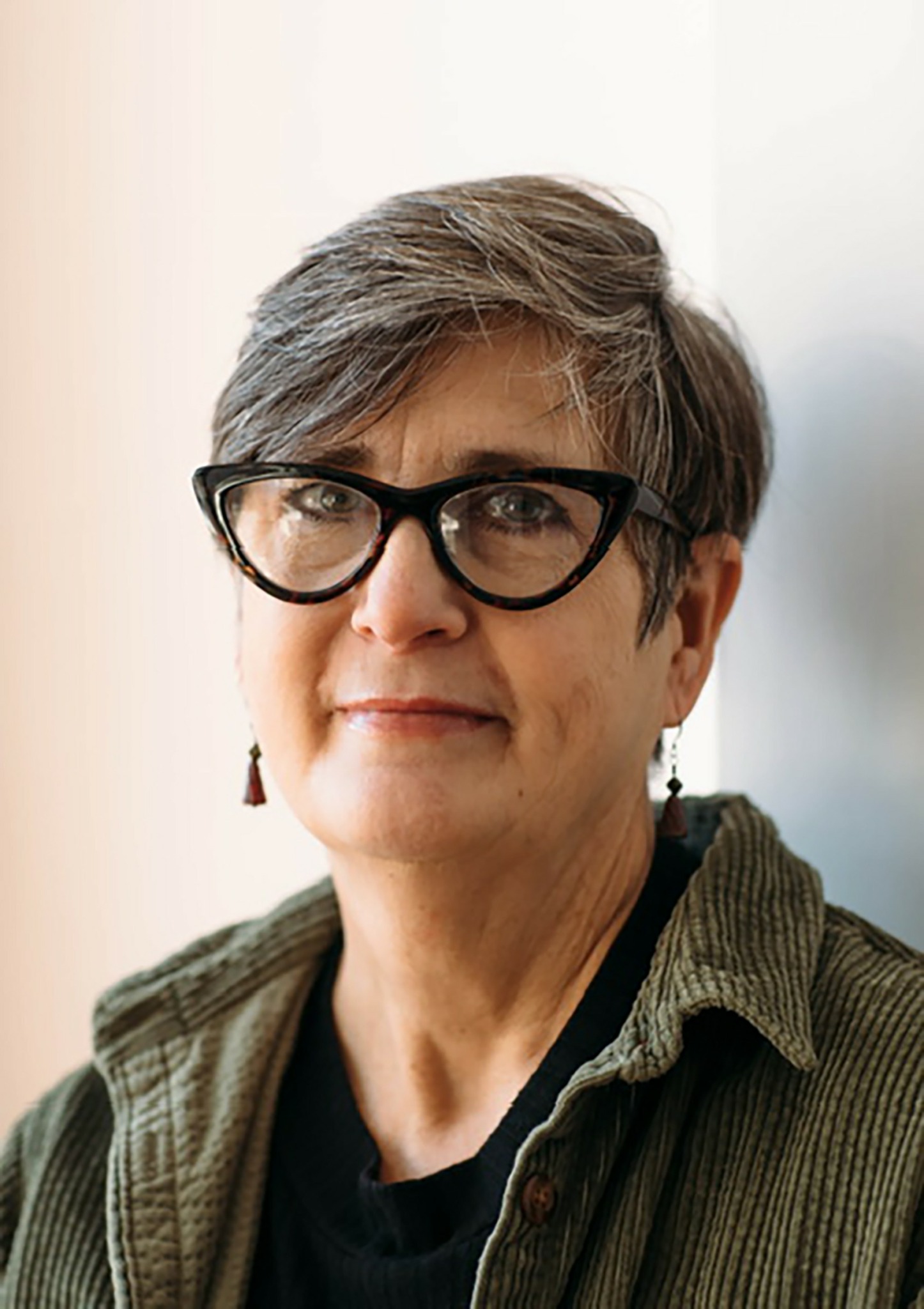We caught up with the brilliant and insightful Nina Martine Robinson a few weeks ago and have shared our conversation below.
Hi Nina Martine, thanks for joining us today. I’m sure there have been days where the challenges of being an artist or creative force you to think about what it would be like to just have a regular job. When’s the last time you felt that way? Did you have any insights from the experience?
I am the happiest I have ever been in my artists life. I get to come into work everyday and do something I love. After many years of cobbling together enough opportunities to make ends meet, I finished up my BA in Studio Arts at the age of 53. I was working at a retail job that I had been doing for 20 years and I was ready for a change. I have always been a maker, doing craft fairs, pop-ups and having my textiles in gallery and gift shops. In 2018, a local textile artist came into the shop where I worked to put up an ad for part-time stitchers. I made the leap in early 2019 and I know that taking that chance saved my sanity and has given my the space to work on my own artistic practice. My unique skill set that didn’t really translate to a “regular” job was perfect for managing a textile arts studio. I am appreciated, can use my problem solving skills and have the flexibility to care for my adult autistic son and my octogenarian parents.

Great, appreciate you sharing that with us. Before we ask you to share more of your insights, can you take a moment to introduce yourself and how you got to where you are today to our readers.
When I think about how I got into the arts, it comes as no surprise really, that I became an artist, it is in my genes. Art has always been an integral part of my life. Both of my parents are artists. My brother and I grew up surrounded by creativity. My mother taught me how to sew when I was twelve, on her vintage Singer sewing machine, it is still my favorite machine to use. In my early thirties I began to explore artist dolls and wearable art. I taught classes and workshops and immersed myself in the fine crafts movement that had become more mainstream at the time. I needed a way to earn a living so I started to make custom children’s clothing, focusing on fun clothes for boys because so many makers made girls clothes. In my late forties, after some serious life changes, I wanted to finish college and pursued my studio arts degree. I set a goal for myself to use my sewing machine in all of my art classes and to blur the line between fine crafts and fine art. When I graduated at 53, it was clear that my passion for textiles would be my focus. It was also during that time that my son was diagnosed with autism at the age of 23. I immersed myself into learning everything I could about neurodiversity and how to navigate this new information. My son was hard on his clothes. We had piles of jeans and pants that had been repaired many times and I was loathe to throw them away.
I wanted to work more sustainably in my studio and address the challenges that come with a late autism diagnosis. In June 2019, I was excepted into the Women’s Art Institute. A month long immersive studio program, sponsored by St. Catherine’s University in St. Paul and the now defunct WARM collective, was pivotal to my current bodies of work. I had dedicated time to develop my visual language and just stitch. Drawing on my own experiences as a mother with a child on the spectrum and focusing on several of the traits that are characteristic to most autistic folks, I began to explore “stimming” or self soothing, repetitive behaviors, that are a commonplace activity to those on the spectrum. This translated into a series of textile prototypes utilizing repurposed men’s dress shirts, and repetitive stitching to illustrate the “otherness” that is often felt by neurodivergent people. Ultimately, I learned I am also on the spectrum and have been focused on late diagnosed autism diagnosis in women. In 2024, I received a Minnesota State Arts Board Grant to explore “masking” or camouflaging autistic traits in women. This opportunity afforded me time and resources to immersive myself into a series of work that I am continuing to develop. What success looks like to me is a deep conversation with an autistic person or family members, in a safe space, surrounded by textile sculptures evoking my interpretation of a neurospicy female. I have been fortunate to share my work locally and nationally in group and solo exhibitions.

For you, what’s the most rewarding aspect of being a creative?
The most rewarding aspect of being an artist is twofold. First, I have discovered that I use stitching, as a “stim,” or self-soothing behavior. Being a creative neurodivergent female that has been deeply masking my autistic traits for most of my life, creating art surrounding these traits has given me the freedom to slowly unmask and work on learning who I really am on the inside as a human being and an artist. Whether I am sewing on my machine or doing hand work, it calms me and keeps me centered. The act of mending my child’s clothing has become meditative rather than an onerous chore. I have combined the deconstruction of discarded clothing with being present in my process, a sort of meditation that has permitted me to work organically and intuitively while constructing my textile sculptures. This leads me to the second and very important part of my studio practice. I have been working almost exclusively with discarded clothing and reclaimed fabric for the last 5 years. Textile waste is out of control and 85% of discarded textiles end up in landfills, both here and overseas. Sustainability in our artist practices is paramount to keeping Mother Earth safe and clean.

What can society do to ensure an environment that’s helpful to artists and creatives?
We find ourselves in a turbulent time in the United States. The current administration has no interest in supporting artists, creatives or a thriving creative ecosystem. They have cut important funding that affects the arts across the board. As an artist, and a person employed in the arts, I see on a daily basis the havoc that is being wreaked. Society needs to understand that everything that we touch, see, and interact with, has a basis in creativity. Art literally heals and the societies support of the creative community is essential to surviving this administration cycle.
Contact Info:
- Instagram: @collaborativeseamstress
- Facebook: https://www.facebook.com/nina.m.robinson.1



Image Credits
nina martine robinson, Cecile Hooker


